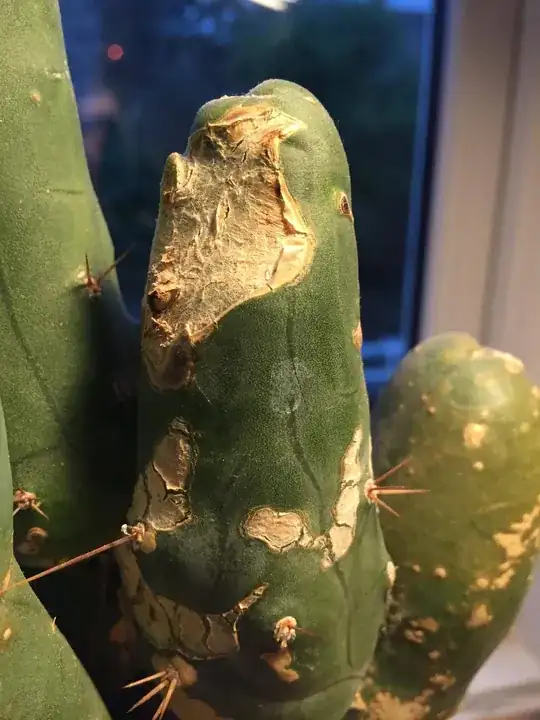I live in the UK and have a Trichocereus bridgesii/Echinopsis lageniformis "monstrose" cactus that I bought from a garden centre 3 years ago. Every year in early summer several new stems grow from sections on the existing stems near to the spines, starting as a bright green colour and growing throughout the summer until they slow down and turn a darker green around September.
Unfortunately I've always found that near the end of this growing period the surface of some sections of the new growth appears to "dissolve" - looking almost as if it has been burnt off by acid - revealing bright green flesh underneath which quickly forms into a white crust. Luckily once the growing season finishes this whole process stops too. Here's a picture:
I'm not sure whether this is a pest or a fungus or otherwise something to do with the plant itself. It spends most of the year inside and sheltered from the damp cold UK weather with minimal watering during the autumn/winter months and every 2 weeks or so in spring with regular feeding. In the summer I put it outside when it's warm and sunny, and I wonder if it could be getting infected when I do this, but I've never seen any small insects on the cactus. Also the repeated occurence of this white crust every year - as well as the fact it stops spreading when the plant stops growing in autumn - makes me suspect that pests might not be the problem. But I'd like to be able to stop it happening this year because it looks very unsightly and I'm quite fond of this cactus!
If anyone recognises this disease or has experience with this species of cactus and can give me any tips on how to prevent it returning this coming year I'd be really grateful. Thank you!
